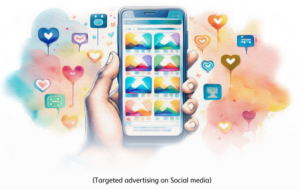Potential Risks:
Algorithm Bias: Users’ perception may be influenced by recommendations of certain information or products deliberately designed to benefit certain organizations, companies, political parties or ideologies.
Invasion of privacy: The indiscriminate collection and analysis of user data such as search history, likes, and comments. Collected data may contribute to algorithm bias.
Ethical Principles in Practice:
History Verification: Review privacy policies to understand why recommendation algorithms display specific content. Balanced Information Consumption: Seek information from diverse sources and perspectives beyond the recommended content Data Minimization: Minimize unnecessary sharing of personal information and consider
blocking personalized advertisements
